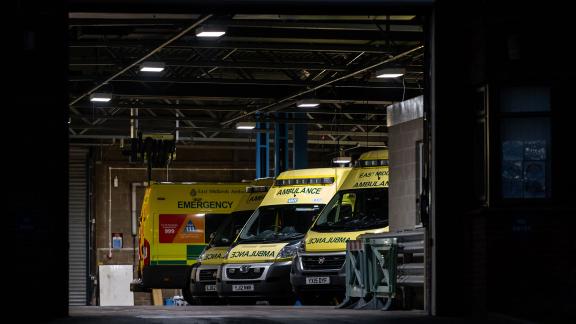Ambulance service pressures need a whole-system response

Pressure on ambulance services reflects pressure across the whole system and emphasises the increasing demand facing the NHS, say Fiona Claridge of the NHS Confederation and Anna Parry of the Association of Ambulance Chief Executives. Here, they outline why the ambulance sector needs a place at the table in strategic planning and decision-making at national, regional, ICS and place level.
Ambulance services have faced extraordinary pressure over the past 18 months. The pandemic placed significant demands on the service and that demand has continued to grow.
Ambulance services link the whole of the NHS, providing an interface between primary, community and secondary care. Pressure on ambulance services reflects pressure across the whole system and shines a light on the increasing demand facing the NHS.
Sustained increases in demand
Between February 2021 and August 2021, almost 60 per cent more 999 calls were answered by ambulance services nationally. Calls for the most serious conditions, such as cardiac arrests, rose 51 per cent during this period, placing significant pressures on ambulance services and the wider NHS and emergency services.
While 999 calls tend to highlight demand related to more serious medical conditions, many ambulance services are also responsible for 111 calls, which increased 54 per cent between February 2021 and July 2021. This sustained increase in demand reflects pressure elsewhere in the system. We know, for example, that there is significant unmet demand for General Practice appointments, despite 25.5 million appointments taking place in August 2021.
At a time when the NHS is facing unprecedented demand, ambulance services are absorbing some of that increase.
Ambulance services are not simply a transport service. Their clinicians are highly trained, skilled and equipped to provide mobile treatment services; increasingly treating people in their homes and the community, as well as providing advice and signposting over the phone. In addition, they provide specialised, often multi-disciplinary team, responses such as falls cars and mental health services.
At a time when the NHS is facing unprecedented demand, ambulance services are absorbing some of that increase, treating more people over the phone and finding ways to reduce the pressure on other services.
As one part of the NHS experiences demand, that pressure is then shifted into another part of the system as patient pathways are traversed. The increasing demand on hospitals can be seen from the longer waits for ambulances to hand over patients at hospital. Waits of over 60 minutes to hand over patients at hospitals increased 285 per cent between February and August 2021. These delays are not only harmful for the patients waiting to receive definitive care in ED, but also lead to major risks for patients in the community waiting for an ambulance response to their 999 call.
Pressure on ambulance services is not just an ambulance issue, it is a system issue.
As patients continue to attend planned appointments the ambulance service, where it has a patient transport service arm, responds, transporting patients to planned appointments such as chemotherapy. As the NHS works to recover elective activity, the pressure on urgent care services places pressure at a different door and despite many trusts adding additional beds, there is limited capacity in a stretched service.
Pressure on ambulance services is not just an ambulance issue, it's a system issue. So what can systems do to help?
Potential must be optimised
Ambulance services have the potential to transform the way patients access much of the NHS. They have shown throughout the past 18 months how they can rapidly change their ways of working, but they need support from the whole system for their potential to be optimised.
We need to ensure that the voice of the ambulance sector is involved in strategic planning and decision-making at national, regional, integrated care system (ICS) and place level.
There needs to be a greater recognition of the ambulance sector’s role as providers of urgent and emergency care and as care navigators, ensuring people are treated in the right place at the right time. Every day there are many care episodes being concluded, either on-scene or over the phone, without the need for onward referral. Systems also must recognise the historic underfunding of the ambulance service and that the potential is there to transform the way that care is delivered. It needs whole-system investment, which builds on the learning from the pandemic, and matches the ambition set out in the long term plan.
Ambulance services are currently experiencing unprecedented levels of demand, which show no signs of abating. This is not solely an ambulance issue, however, but a whole-system issue requiring a whole-system response.
Fiona Claridge is assistant director of membership and policy for London and the east, at the NHS Confederation.
Anna Parry is deputy managing director of the Association of Ambulance Chief Executives.
You can follow Anna and Fiona on Twitter @AnnaParry12 @fionaclaridge


